One-Hundred-Year-Old Military Tunnel Unveiled for the First Time
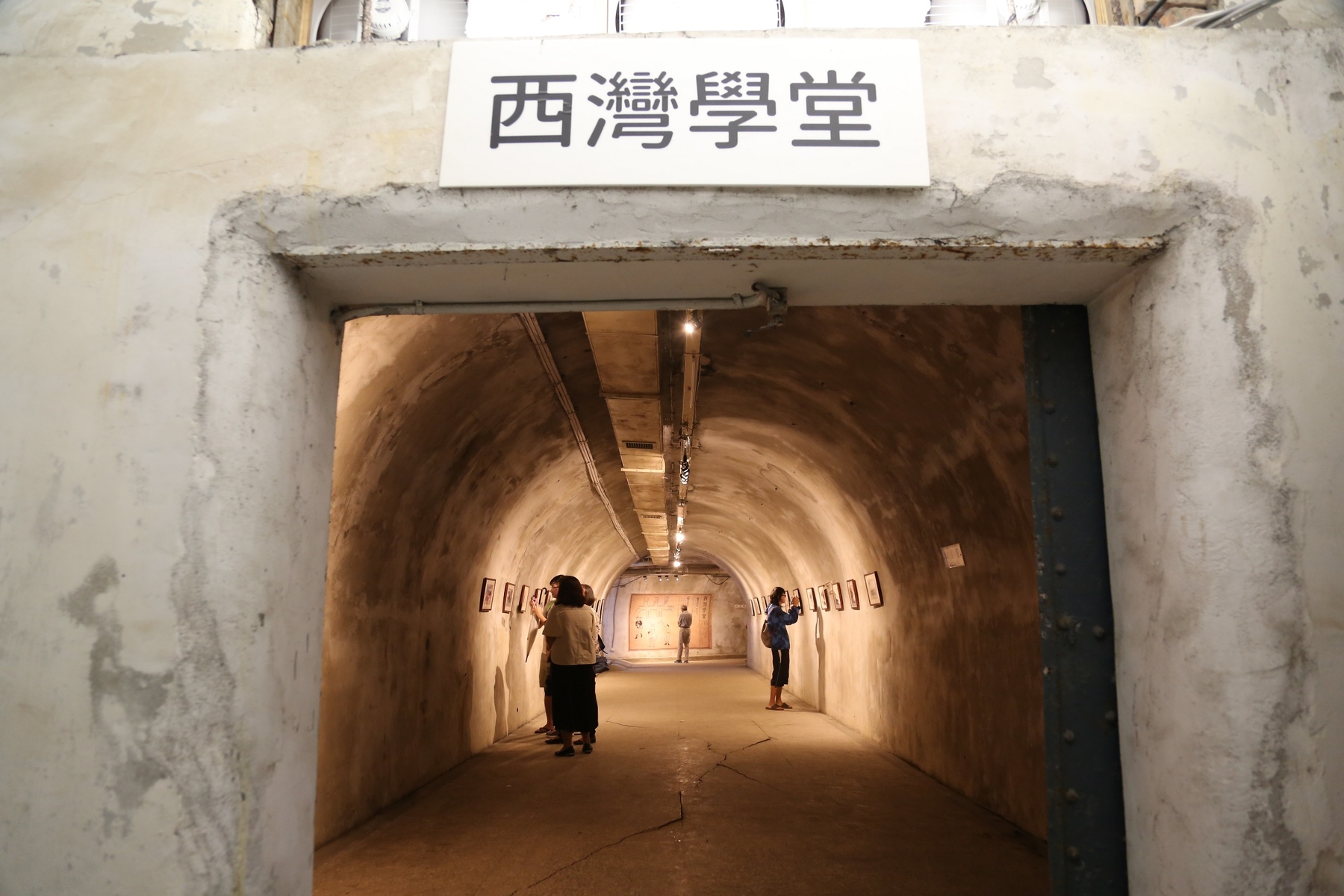
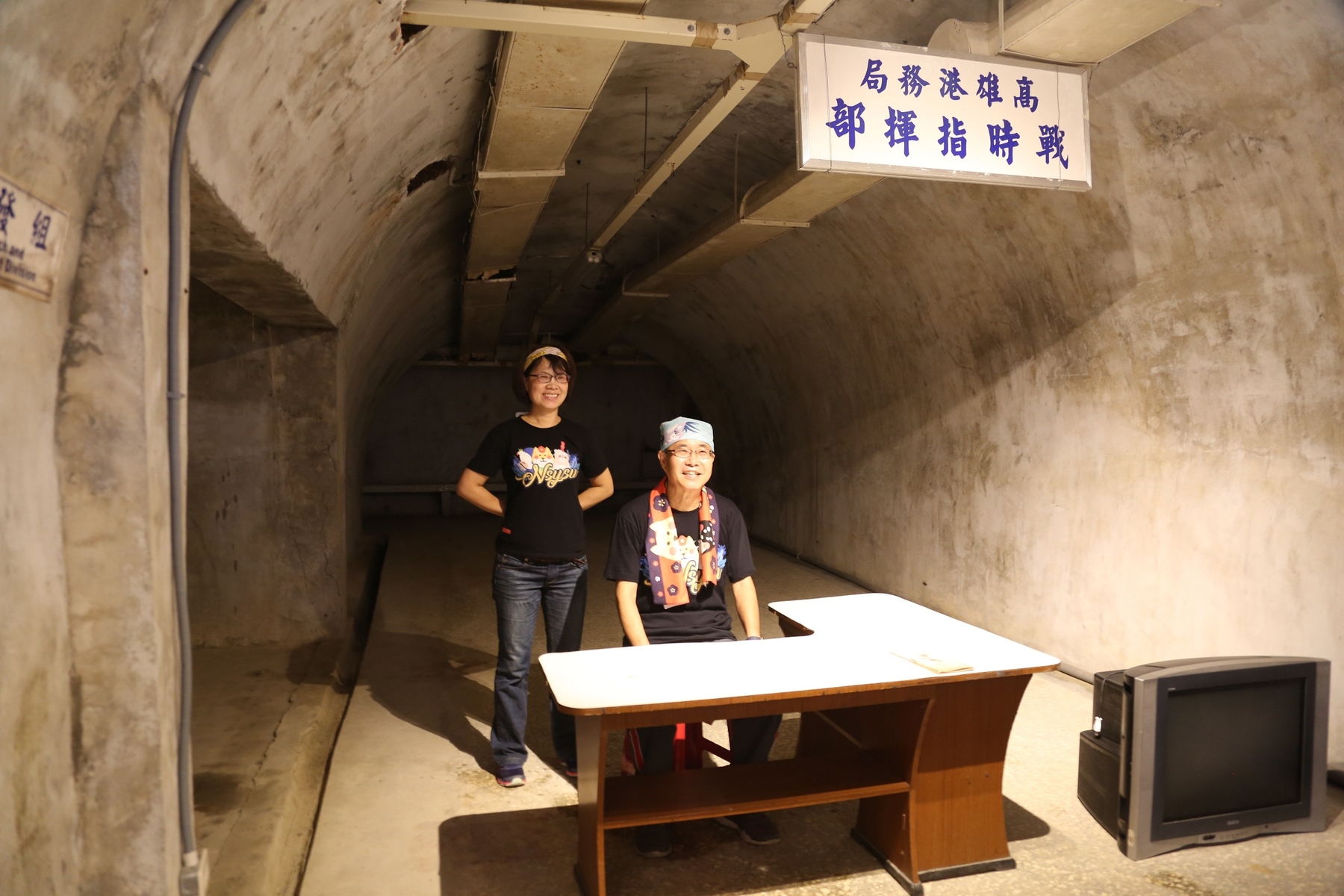
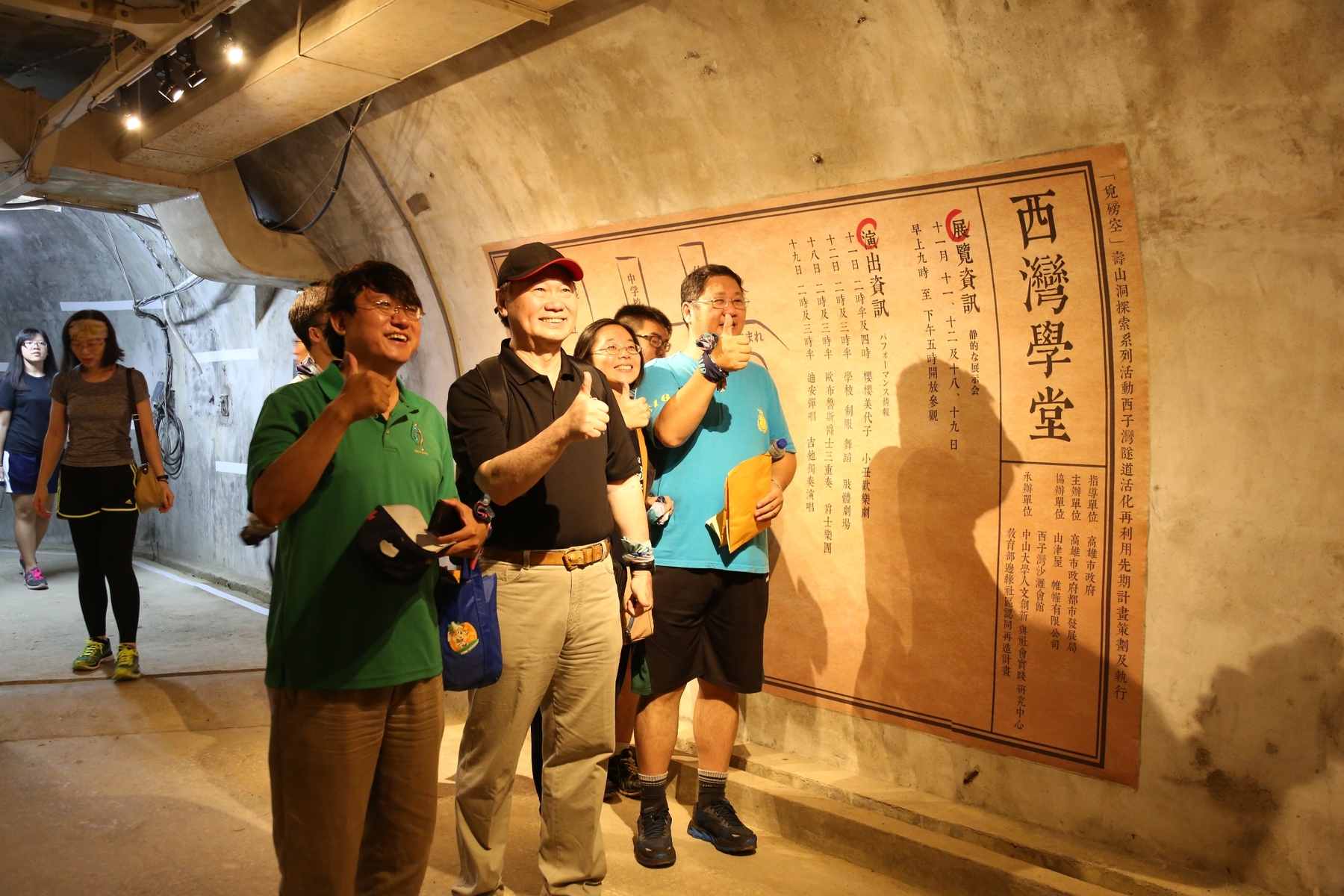
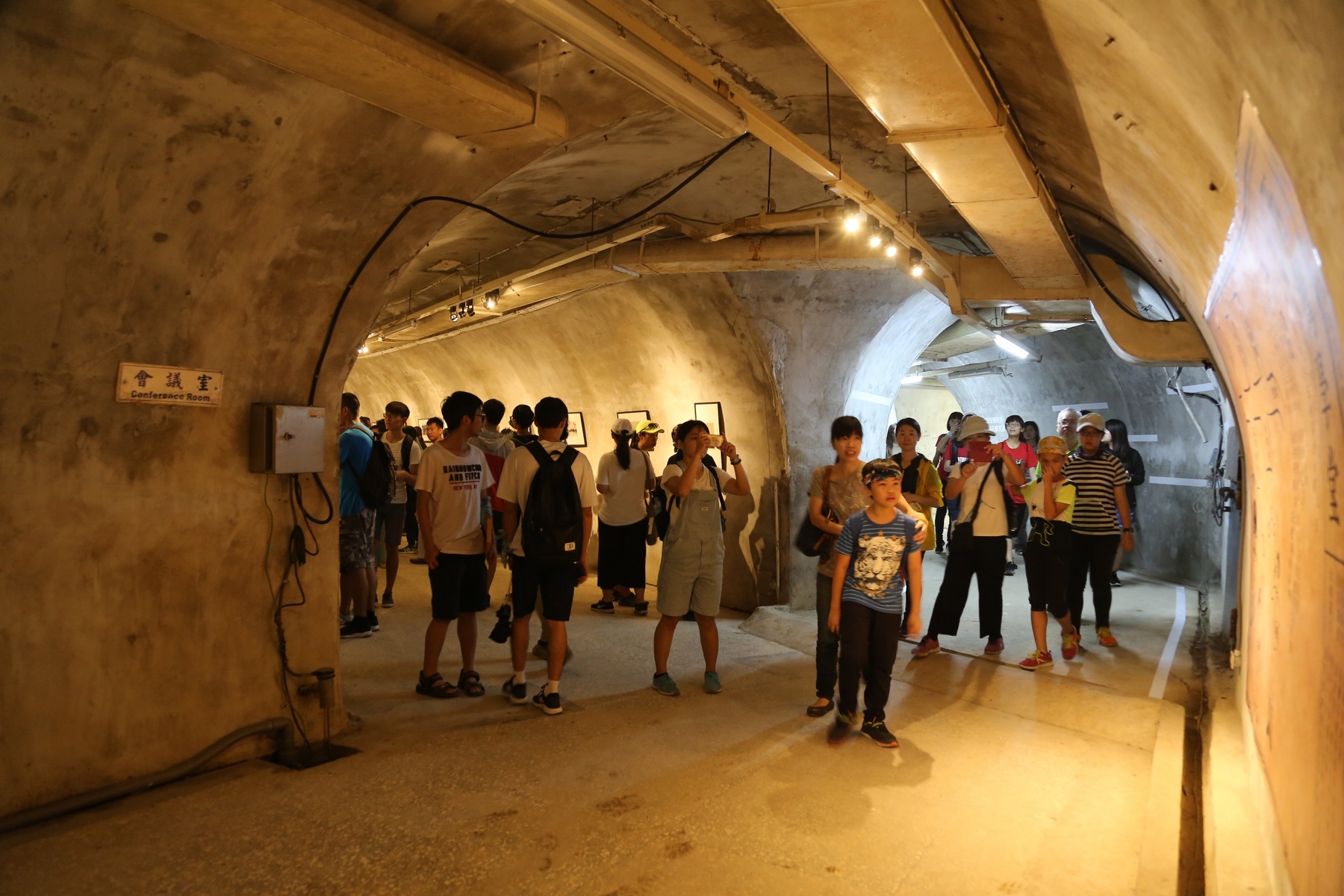
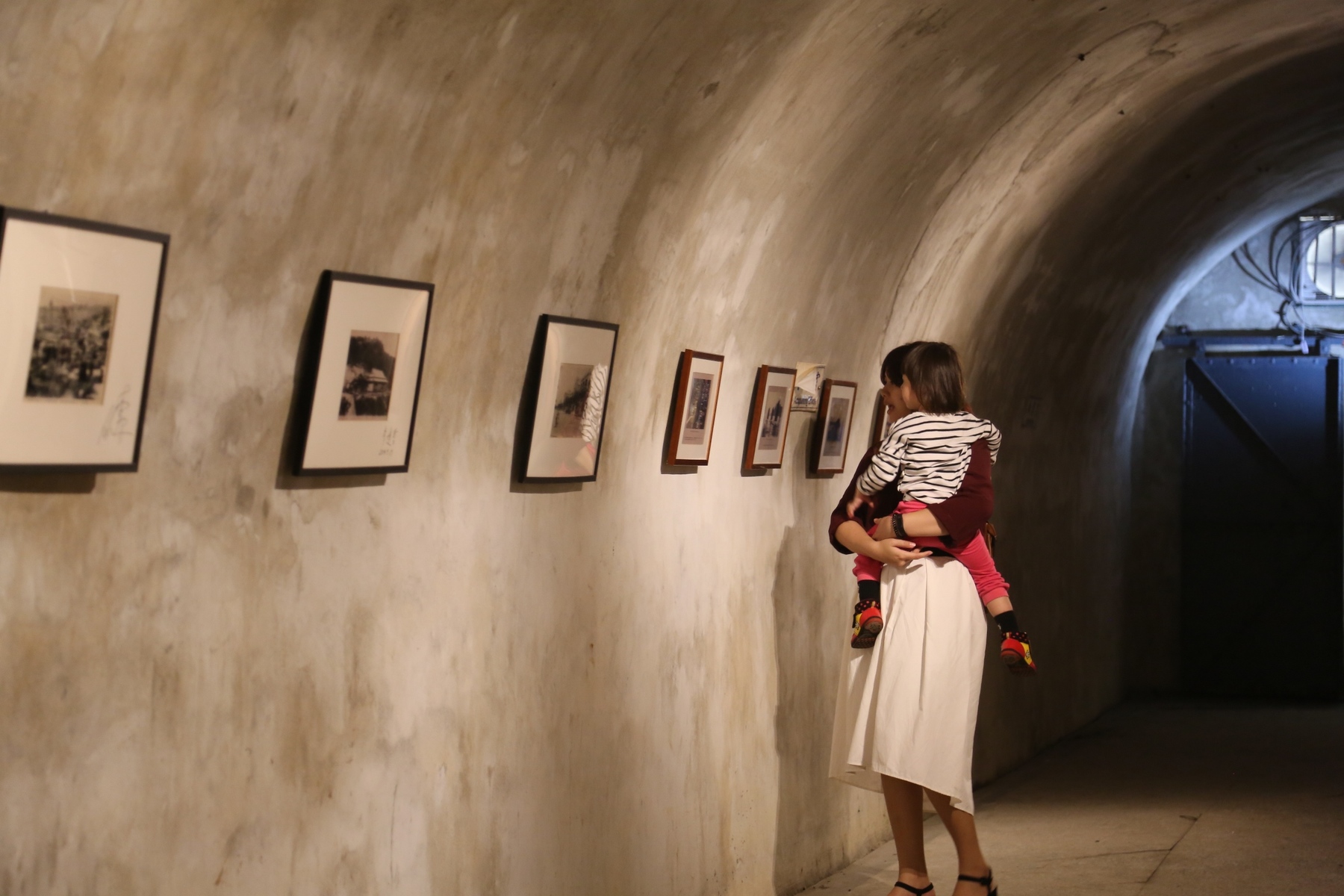
In the Sizihwan Tunnel near NSYSU, a Japanese colonial era military base that had been hidden for approximately 100 years was publicly unveiled on November 11, 2017. To celebrate the 37th anniversary of NSYSU, an activity titled “Walking into a mysterious place and walking along Sizihwan” was held. The university adopted 15 local delicacies from the Yancheng District, Hamaxing, and Qijin District in Kaohsiung to connect the exploration of three mysterious places, including walking into the Sizihwan Tunnel, touring a historical site on Lane 60 on a mountain climbing street, and walking in Sizihwan. The first stop, Sizihwan Tunnel, has a 90-year history and was not previously open to the public. This activity attracted more than 500 visitors including teachers and students.
NSYSU stated that the mysterious tunnel is located inside Sizihwan Tunnel and is actually a group of tunnels. The tunnel had not been previously opened to the public. In 1927, a Japanese engineer, Unno Ito, dug into the Sizihwan Tunnel, completing the work in 1928. The newly dug tunnel was named Shoushan Cave, and could be used to reach mountains and the sea. The cave is spacious, comfortable, and ventilated and has independent water and power systems, bathrooms, and accommodation areas. During the Japanese colonial period, the cave served as the center of Japanese military command. This extensive military command base was used as an air-raid shelter that could accommodate 2150 people. In 1945, Japanese people hid in the cave to evade an attack by the American military on the Kaohsiung sixth fuel plant. Subsequently, the Port of Kaohsiung built an office on this site.
NSYSU President Ying-Yao Cheng stated that “many people do not know that the Sizihwan Tunnel between Hamaxing and National Sun Yat-sen University is an air-raid shelter that can accommodate more than 2000 people.” Cheng emphasized that the aforementioned three mysterious places have historical meaning and are all sites of cultural evolution in Kaohsiung. In contrast to Lane 60 on the Dengshan Street (mountain climbing street), which has a 100-year history, the aforementioned mysterious tunnel and the sea area were not previously open to the public. People were invited to participate in the exploration activity to experience the beauty of these mysterious places.
Vice President for Student Affairs Ching Li Yang stated that for the activity, NSYSU had installed an art installation titled “Siwan School,” which depicted people’s memories of school from kindergarten to university. The idea of the installation was to lead the activity participants through the tunnel and encourage them to reflect on their lives. In addition, the redecorated Lane 60 on the Dengshan Street became a public historical space for the participants to experience glorious aspects of history along the trail.
Lane 60 on the Dengshan Street was the route used by the Taiwan governor, Mingchuan Liu, in the Qing Dynasty to transport barrels to Shoushan Fort, and was the location where the Yongquan ravine was met at Ta Shui Wan. Foreign commercial vessels used to obtain fresh water from the Yongquan ravine. Because of the excellent quality of this water, Japanese workers were hired to build a guesthouse for members of the Japanese aristocracy on the mountainside of Shoushan to access the fresh water. Before and after World War II, officers’ quarters, veterans’ homes, and houses for immigrants from Tainan and Penghu were built on Lane 60 on the Dengshan Street. Starting in 2017, NSYSU is to cooperate with the Urban Development Bureau of the Kaohsiung City Government to rebuild the historical site and let nearby residents experience the notable ancient road that survived the Qing Dynasty and Japanese occupation.
The sea area, Sizihwan Beach, has been favored by Japanese people since 1916. For easy access to the beach, Japanese workers were hired to build the Sizihwan Tunnel. The beach had three sections. The first section was inside the breakwater and located at the present site of NSYSU’s stadium. The second section was outside the breakwater and located at the present site of the Sizihwan beach, which was constructed in 1975. The third section was hidden in the Chaishan military control zone and was located at the present site of the sea area that is not open to the public. Sailing courses and university activities are often held in this area, which is also the designated location for national sailing competitions.
NSYSU stated that the mysterious tunnel is located inside Sizihwan Tunnel and is actually a group of tunnels. The tunnel had not been previously opened to the public. In 1927, a Japanese engineer, Unno Ito, dug into the Sizihwan Tunnel, completing the work in 1928. The newly dug tunnel was named Shoushan Cave, and could be used to reach mountains and the sea. The cave is spacious, comfortable, and ventilated and has independent water and power systems, bathrooms, and accommodation areas. During the Japanese colonial period, the cave served as the center of Japanese military command. This extensive military command base was used as an air-raid shelter that could accommodate 2150 people. In 1945, Japanese people hid in the cave to evade an attack by the American military on the Kaohsiung sixth fuel plant. Subsequently, the Port of Kaohsiung built an office on this site.
NSYSU President Ying-Yao Cheng stated that “many people do not know that the Sizihwan Tunnel between Hamaxing and National Sun Yat-sen University is an air-raid shelter that can accommodate more than 2000 people.” Cheng emphasized that the aforementioned three mysterious places have historical meaning and are all sites of cultural evolution in Kaohsiung. In contrast to Lane 60 on the Dengshan Street (mountain climbing street), which has a 100-year history, the aforementioned mysterious tunnel and the sea area were not previously open to the public. People were invited to participate in the exploration activity to experience the beauty of these mysterious places.
Vice President for Student Affairs Ching Li Yang stated that for the activity, NSYSU had installed an art installation titled “Siwan School,” which depicted people’s memories of school from kindergarten to university. The idea of the installation was to lead the activity participants through the tunnel and encourage them to reflect on their lives. In addition, the redecorated Lane 60 on the Dengshan Street became a public historical space for the participants to experience glorious aspects of history along the trail.
Lane 60 on the Dengshan Street was the route used by the Taiwan governor, Mingchuan Liu, in the Qing Dynasty to transport barrels to Shoushan Fort, and was the location where the Yongquan ravine was met at Ta Shui Wan. Foreign commercial vessels used to obtain fresh water from the Yongquan ravine. Because of the excellent quality of this water, Japanese workers were hired to build a guesthouse for members of the Japanese aristocracy on the mountainside of Shoushan to access the fresh water. Before and after World War II, officers’ quarters, veterans’ homes, and houses for immigrants from Tainan and Penghu were built on Lane 60 on the Dengshan Street. Starting in 2017, NSYSU is to cooperate with the Urban Development Bureau of the Kaohsiung City Government to rebuild the historical site and let nearby residents experience the notable ancient road that survived the Qing Dynasty and Japanese occupation.
The sea area, Sizihwan Beach, has been favored by Japanese people since 1916. For easy access to the beach, Japanese workers were hired to build the Sizihwan Tunnel. The beach had three sections. The first section was inside the breakwater and located at the present site of NSYSU’s stadium. The second section was outside the breakwater and located at the present site of the Sizihwan beach, which was constructed in 1975. The third section was hidden in the Chaishan military control zone and was located at the present site of the sea area that is not open to the public. Sailing courses and university activities are often held in this area, which is also the designated location for national sailing competitions.
Click Num:
Share
